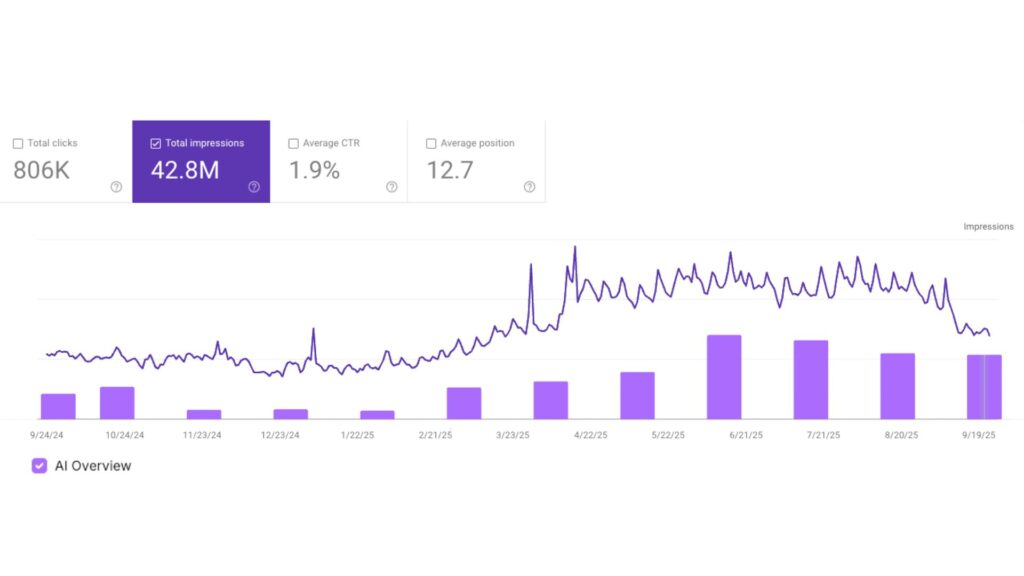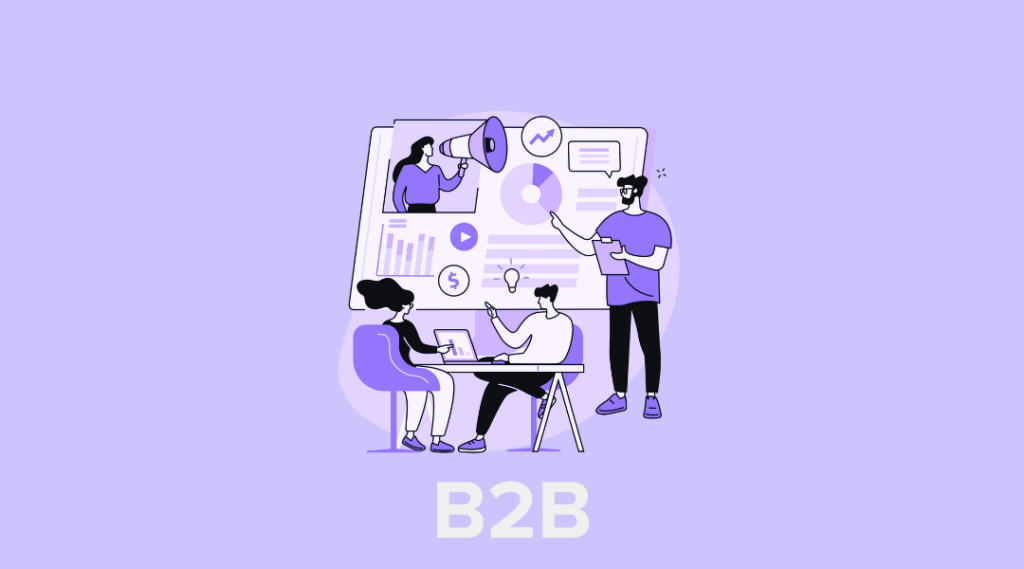Let's face it, if you've been in digital marketing for any length of time, you're used to Google shifting the goalposts. But every so often, a change comes along that quietly rewrites the rules—leaving SEOs, digital marketers, and stakeholders squinting at their dashboards and wondering what just happened.
In early September 2025, that change arrived in the form of Google quietly killing support for the &num=100 parameter. Impressions dropped. Average positions shifted. Organic performance reports started to change overnight. But behind the scenes, it’s a more complex story—one that isn’t just about “cleaning up” noisy data or blocking a few bad bots.
Let’s break down what we know (so far), why it matters, and what the industry should be paying attention to next.
What was &num=100, and why did SEOs (and tools) use it?
For years, the &num=100 parameter has been an open secret among SEOs and the backbone of rank-tracking tools. Add it to the end of a Google search URL, and suddenly you’d get 100 organic results on one page instead of the usual 10. This made it possible to see the full breadth of a SERP in one snapshot—fueling everything from competitive research to deep-dive audits, and, yes, powering the data behind every major SEO tool you’ve ever used.
Why did this matter?
- Comprehensive data: Rank trackers like SEMrush, Ahrefs, Moz, SISTRIX (and countless custom scripts) all relied on this parameter to scrape and monitor SERPs at scale, efficiently, and with minimal requests.
- Real visibility: It gave us a more complete sense of a site’s true search exposure—not just in the top 10, but all the way down to position 100.
- Better reporting: Agencies and in-house teams used that data to help clients understand opportunities beyond the first page. Finding those gems within striking range of ranking a position that would garner clicks.
It wasn’t just SEOs—Google power users, data scientists, and technical marketers were using this for over a decade.
What changed? Google quietly kills &num=100
In early September 2025, the industry began to notice something unusual, and LinkedIn lit up like a Christmas tree with the SEO community posting the #100 trick had simply stopped working. No announcement, no documentation update—just a hard cut.
Now, if you append &num=100 to a Google search, you still get the default (usually 10) results per page, and you have to paginate to go deeper. For automated tools, this meant 10 times more requests to get the same data—raising costs and complexity overnight.
Google later confirmed what we’d already discovered:
“The use of this URL parameter is not something we formally support.” (Google spokesperson, via Search Engine Land)
The immediate impact?
- Impressions in Google Search Console plummeted (especially for sites with lots of deep rankings or frequent AI Overview appearances)
- Average positions shot up—as “deeper” positions were no longer counted, sites suddenly appeared to be ranking higher
- Rank tracking tools and reporting dashboards broke or became less reliable
- Confusion and frustration spread across teams and clients who saw reports shift but didn’t see real changes in site traffic
Tools have been scraping for years—so why the sudden change?
Let’s address the elephant in the room. Scrapers and rank trackers aren’t new. SEMrush, Ahrefs, Moz, and others have used the &num=100 parameter (or similar deep-SERP methods) for years—long before the rise of LLMs or recent impression spikes.
If scraping was the true concern, this could have been closed off years ago. Likewise, LLMs (large language models like Chat GPT) have been “out in the wild” and actively using web data for much longer than this recent shift in impressions. So, why now? That’s the question the industry is still debating.
How did this impact impressions, average position, and reporting?
This is where it gets interesting for both practitioners and stakeholders. With &num=100 gone:
- Impressions dropped sharply in Google Search Console. Sites that used to appear across the SERP suddenly saw their impressions in organic search shrink.
- Average positions improved (on paper), since low-ranked, rarely-seen results were now filtered out of the data.
- Traffic and conversions remain the same. Reviewing across numerous sites, actual business outcomes didn’t change. It was the measurement—not the reality—that shifted.
- Client and executive dashboards became misleading, so annotating and documenting this shift is crucial to avoid further confusion a year from now.
If you saw your site’s “impressions” cut in half, but clicks and conversions remained steady, you’re not alone.
Learn more: Your SEO KPIs Are Broken: Rethinking Organic Success After Google's AIOs →
Google’s official reason: housekeeping, scrapers, and “cleaner” data
Google’s public rationale:
“We don’t support the &num=100 parameter. This is about reducing noise, improving data quality, and limiting bot/scraper access.”
On the surface, this explanation makes sense. More requests for deep SERP data put a load on infrastructure. Cleaner GSC data (less bot-driven noise) is a worthy goal. Most of us would agree that Search Console should reflect real user activity, not just tool scraping bots.
But here’s the catch: the tools and bots they’re citing aren’t new, and the data never got this “noisy” before.
A more likely motive? Hiding the AIO click gap
Here’s where things get more interesting—and, frankly, a little uncomfortable for the industry.
Let’s look at the timeline:
- Late Summer 2024: Google begins rolling out AI Overviews (AIOs) more widely across search.
- This rapidly scales in January 2025, going into Spring 2025: Impressions in GSC skyrocket for many sites, as AIOs essentially double the impression rate when paired with organic rankings, yet show little corresponding uptick in clicks.
- The “AIO Click Gap” becomes obvious. Marketers, clients, and anyone watching closely start asking: “We’re getting all this exposure—so why are clicks going down?”
- GSC graphs started looking like a crocodile’s mouth: impressions up, clicks down. Many coined it “The Great Decoupling.”
- Fall 2025: Google cuts off &num=100. Impressions plummet. The click gap suddenly becomes less obvious.

Is it really about scrapers? Or about controlling the narrative around AIOs?
It’s fair speculation. By reducing total impressions, Google brings the ratio of clicks:impressions back into alignment—masking just how much AI Overviews are cannibalizing organic clicks. The “scraper” rationale is plausible, but the timing raises eyebrows for anyone paying attention.
For stakeholders—especially those investing in organic search—this means that traditional metrics can now hide the true impact of these AI-driven features. We’re flying a little more blind.
What should SEOs, marketers, and stakeholders do now?
This isn’t just an SEO problem. It’s a strategic and business reporting issue. Here’s how to navigate the new landscape:
- Annotate your analytics: Mark September 2025 as a measurement shift. Pre- and post-&num=100 data are not apples-to-apples.
- Focus on what matters: Clicks, conversions, revenue, and top-of-SERP presence matter far more than impression volume or “average position.”
- Educate your teams and clients: Explain what changed and why their dashboards may look “better” or “worse” overnight. This is not about performance—it’s about how Google now reports visibility. (I know we literally just went through this, educating on the skyrocketing impressions. Sorry.)
- Watch the AI Overview space: Stay curious and keep an eye on how AIOs shift your metrics, especially as Google tweaks both features and reporting in the months ahead. If AI Mode gets a full rollout, this change is going to be exponential.
- Ask harder questions: Don’t take Google’s rationale at face value. Push for transparency in how search is evolving and what it means for your business.
This is an opportunity to be a better steward for your brand or clients—not just chasing metrics, but understanding what they truly reflect.
The new reality of measuring search
The disappearance of &num=100 isn’t just a technical footnote—it’s a reminder that, in digital, the numbers can change even when the work doesn’t.
For clients, partners, and the broader marketing community, our role is to keep one eye on the data—and another on the broader narrative. Google’s updates are as much about perception as they are about performance.
If your reporting doesn’t match what you’re seeing on the ground, ask why. Share data. Compare notes. Start the conversation early with your team or agency, and don’t be afraid to ask for clarity on what’s changed—and what really matters now.
Want to talk through what this means for your business, your reporting, or your digital marketing plan for 2026? Let’s connect and make sure your measurement is telling the right story.
You might also like:





